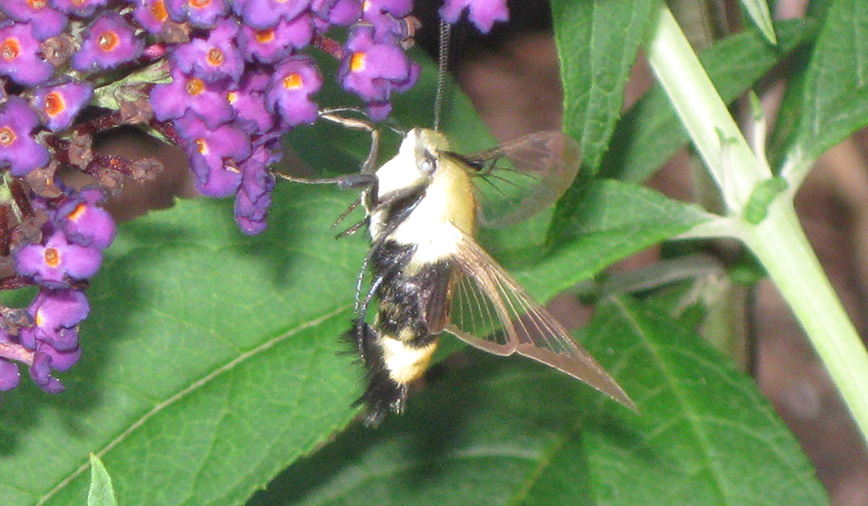“What is that?”
Here in the naturalist department, it’s a phrase that’s repeated often. And, I’ve got to admit, it’s one I love to hear. Over the last few months, we’ve answered questions about and helped identify ticks (American dog as well as deer); skulls (mostly raccoon, with the occasional opossum and coyote); birds (Cooper’s hawks, turkey vultures, chimney swifts, red-winged blackbirds and baby bluebirds, to name a few); flowers (enchanter’s nightshade and a non-native toadflax were the latest); fungi (like the smelly and somewhat naughty stinkhorn); and snakes (no, the water snakes in the Fox River are not venomous).
But, far and away, the nature subject area that provokes the greatest number of questions is that of our six-legged friends, the insects. Sometimes, the question has to do with the critter’s sheer size, as was the case with our dobsonfly from a few weeks ago. Other times, the concern is about noise, such as the call regarding male katydids’ staccato night-time chorus, or a creature’s menacing appearance, as in the case of a long-horned beetle that turned out to be a pine sawyer.
Then there are the real oddballs, those heavens-to-Betsy, goodness-gracious, what-in-the-world-do-we-have-here critters—the kind that merit not just a phone call, but also emails and photos.
Earlier this week, Janie and Richard Pierce called with just such a bug. They’d spotted it hovering around their butterfly weed, and boy was it a doozie. Measuring about 2 in. long, it looked furry or possibly feathery and sported striking black and yellow stripes. On the phone, Janie described it as half hummingbird, half bumblebee—a bumblebird, if you will.
What the Pierces had—and what you too may be visited by, if your yard features showy, nectar-laden flowers—is a snowberry clearwing moth, also known as the bumblebee clearwing, Hemaris diffinis.
Clearwings are members of the sphinx moth family but, unlike their nocturnal cousins, these guys fly during the daylight hours. Like all butterflies and moths, or Lepidopterans, clearwings start off with scales on their wings. (The order’s name is derived from the ancient Greek lepidos, scale, and pteron, wing.) But the scales soon fall off, leaving large patches on the wings bare, or clear.
The other clearwing seen in our area is the hummingbird clearwing, Hemaris thysbe. Watching these insects nectaring at a flower, or even at a hummingbird feeder, it’s easy to see how they could be mistaken for “baby hummingbirds” (which, by the way, would never be seen displaying such behavior, as they must be fully developed before leaving the nest). The moths hover much like a hummer, and their long tongues look a little like a hummingbird beak. Adding to the illusion, the moths will extend a foreleg or two onto the flower as a means of staying in place.
What you won’t notice, however, is that characteristic low, humming sound a hummingbird’s wings make. Clearwings’ wings beat at a different speed, and lack feathers, so the sound they produce is more of a quiet rustling.
Clearwing moths are quite active now, feasting on nectar and getting down to the business of creating a new generation. Next year, look for their larvae—hornworm caterpillars similar to what you find on your tomatoes—on plants such as honeysuckle, viburnum, snowberry, cherry and plum.
Armed with this information, should you come upon a clearwing, you’ll now be able to answer that most common of nature questions, “What is that?” But, be prepared. Nature being nature, there’s likely to be yet another mysterious object nearby and, along with it, that next most common nature question, “What is that?”
Pam Otto is the manager of nature programs and interpretive services for the St. Charles Park District. She can be reached at potto@stcparks.org or 630-513-4346.

